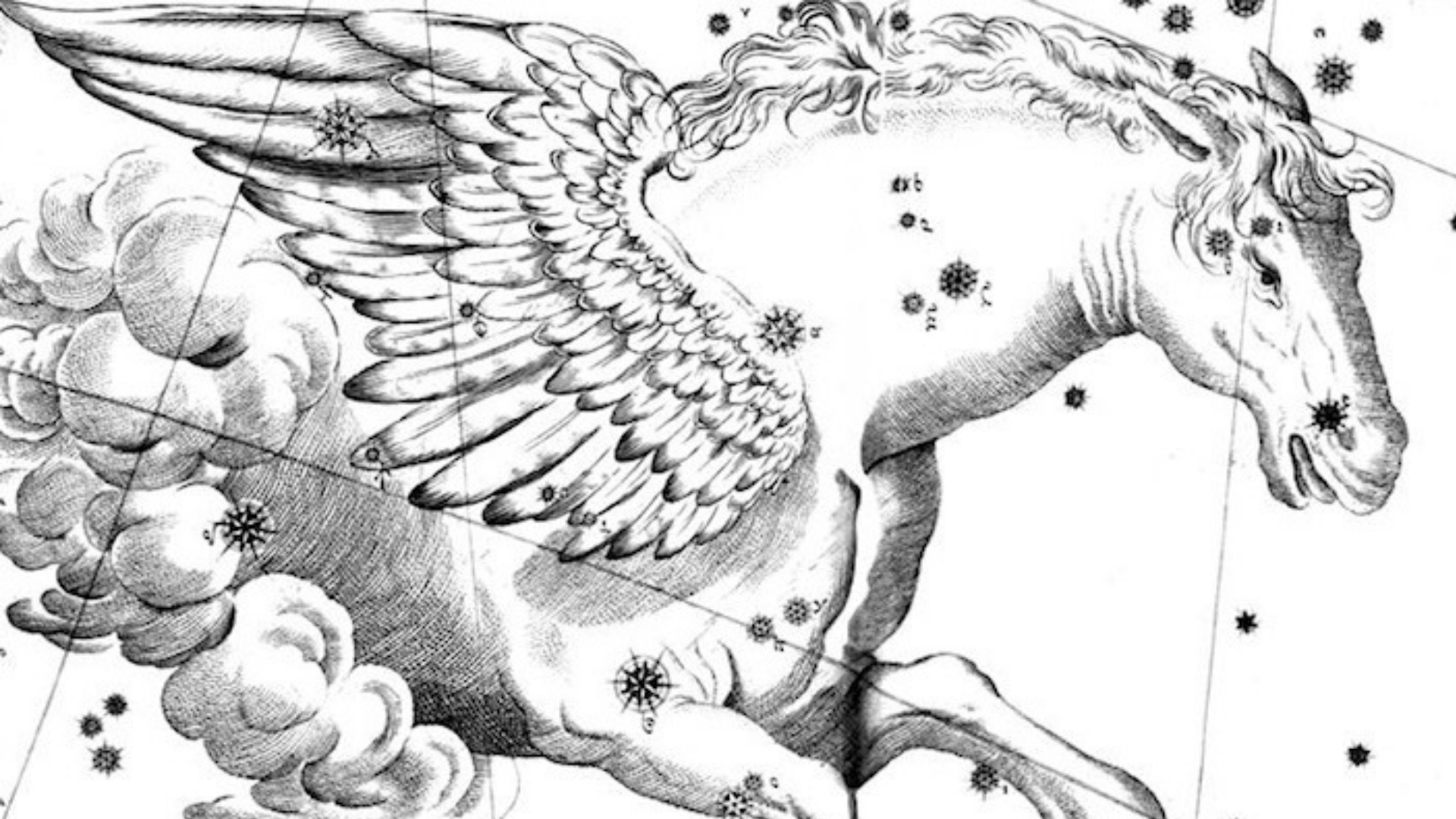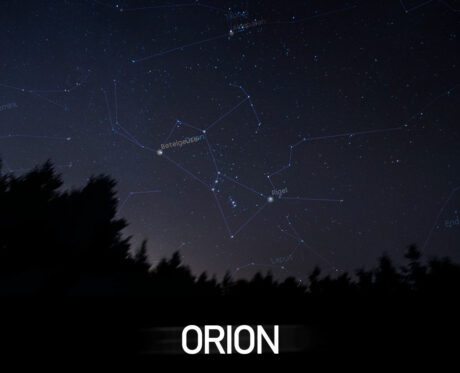Your Genomic Inheritance
§ NOTE March 2023: JLL is currently working on the book introducing the theory and practice of Celestics. Meanwhile, you will find a limited release of material here. At the moment, Nemeta does not offer interpretations of StarBase manifolds, and the Celestics Training Course is still in revision since its original presentation in 2016.
At the close of three decades in development, Celestics has so far not been released to the public at large. Revision of Quest for the Zodiac (2000) is long overdue. That book is out of print. The version that can be found for sale (as no profit to myself) on the internet does not adequately or accurately represent the form Celestics has now taken. It has serious flaws and some downright silly assertions, and much of it can be disregarded as rough work that does not stand up so well 23 years later.
A Second Inheritance
So what is so special, new, and different about Celestics, that distinguishes it from all other systems of astrology? Quite a lot, actually. But to state the essential difference up front, how about this:
Celestics is a forensic method that shows what you as a individual inherit through your intimate connection to the human species in its entirety, contrasted to what you inherit exclusively from your blood-line parents.
What you inherit from your parents and the extended ancestral lineage behind them is transmitted in the make-up of your chromosomes, encoded in nuclear DNA. That is your geneological inheritance. To compose the individual person you are in a genetic formula derived from a distinct blood-line, nature only uses 5% of the entire genomic chain. 95% is set aside. Biologists call this huge component of genomic code by the rather insulting term, “junk DNA.” So far, it is not understood what nature might intend for the 95% of the genome that it sets aside when it selects the specific geneological formula that produces you by blood-line generation. To be more specific, the purpose that the non-geneologically active DNA in the genome might have for a human individual is unknown. That being so, no purpose (to my knowledge) has been proposed or explored.
Celestics stands on the theory that the genomic deposit of 95% also carries an inheritance that you can identify and express given the framework to know what it is, and the tools to develop it. It asserts, and seeks to prove, that each human individual has a genomic inheritance that transcends geneological ancestry. The latter comes to you from traceable blood-line relatives, going as far back at you might wish to investigate. The former, genomic inheritance, comes from those who lived before you to whom you are not related in that way — but in another way. After all, each of us is ultimately related to everyone who has been produced from the generic plasm of humanity, the total human genome. This relation is not due to blood-line connections but to a deeper and more far-reaching process, called phylogenetic transfer. Some explanation is due as this is a novel concept.
Phylogenesis is defined as the evolutionary development and diversification of a particular species or group of organisms. It contrasts to ontogenesis, defined as the development of an individual organism so that it exhibits specific features and behavior from the earliest stage to maturity. The two concepts come together in the famous one-liner of Ernst Haeckel, “Ontogeny recapitulates phylogeny”.
Signs And Constellations
Over many years I have talked and taught about the differences between signs and constellations. Celestics routinely uses the format of the tropical signs (tropical register) and the corresponding ecliptic degrees (360-degree protractor of the ecliptic rim) to locate stars and marks the boundaries of the real-sky constellations. For example, the boundaries of the constellation of the Scales or Balance (below, two o-clock position) are ECL 223 – 239, equivalent to 13 – 29 of the sign Scorpio. These notations are merely for location purposes. These are shorthand tools for training the student both to visualize the graphics of the constellations and to observe them in the night sky. They have no interpretive value. The ecliptic degree of the star beta Librae is ECL 230 or 20 Scorpio. This star (named Zubeneschamali) marks the top of the vertical structure of the Scales, the fulcrum. Whether indicated by sign degree in the tropical register or ecliptic longitude in the full 360-mark register, the graphic location is what matters. If you have five pounds of oranges, what matters is the oranges you can smell and eat, not the pounds.
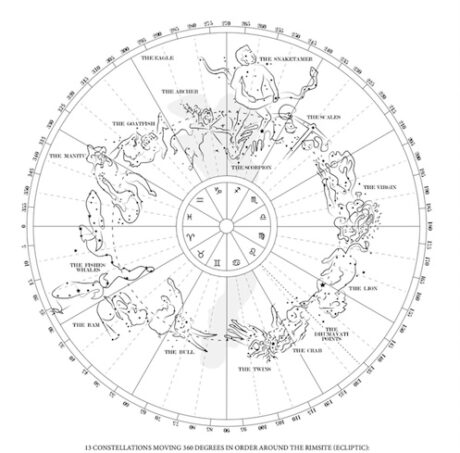
Here you see the actual observable constellations formed of star-to-star patterns with graphics added. There are 13 of them, including the Snaketamer at top. The notation scale for locating this stars is the 360-degree circle, like a plastic protractor or circular ruler. The zero point of the scale is on the left at the nine 0’clock position, the division between the signs Pisces and Aries. The astrological signs are merely 30-degree divisions of that register. They are starless: so imagine that the plastic protractor displays these divisions printed on it. The inner circle shows the symbols for the 12 signs, divided conveniently into 30 degree slices.
You can find where the sun at your birth is in the constellations if you know the degree in the astrological format. For example, if you are born on June 26, the sun is in 4 degrees of that sign, making you a Cancerian. Cancer runs from 90 to 120 on the perimeter of the protractor. You can see that that degree, 4 Cancer, places you sun in the feet of the Twins, which is a constellation, not a sign. Even if you do not know the exact degree of your birth sun, you can estimate where it will be in the constellations. Another example, if you are born on November 12, the sun is in 20 Scorpio in the sign format, but in the constellations it stands at the fulcrum of the Scales, or Balance.
Signs and constellations do not match or correspond. In Celestics, the 360-degree circle of signs in merely a way to locate positions in the sky. It is a positional tool. It has no interpretive value. The usual rules of interpretation for sun-sign astrology do not figure into either the theory or practice of Celestics. To keep this fact in mind, it is useful to use Celestics: “double talk” such as, “You are born with the sun in 1 Virgo in the heart of the Lion,” to emphasize that both signs and constellations are distinct formats. You are still a Virgo in the tropical, sun-sign model, but there is more to be discovered by looking at the real-sky location. The two formats do not contradict each other. Tropical astrology tells you certain things about your personality and psychological complexes. Celestics tells you things which are distinctly different.
Also, take note that the two formats never coincided or correlated at any time in the past as some astrologers claim. Looking at the illustration above, you can immediately see how this was not possible due to the obvious fact that the size, shape, and proportion of the constellations is not uniform and cannot be reduced to 12 equal 30-degree sectors. Signs and constellations do not correspond, never did, never will!
Celestics is a constellational format. Also called the stellar zodiac or real-sky zodiac. The format of popular astrology is starless. Thus there are two zodiacs, one starless and one based on the stars observable in the night sky. What then is the primary difference in what is to be learned from these two distinct models? I have given some indications above, and you will find more explanation below. But the outstanding difference is that the starless zodiac is a tool for psychological analysis and personality profiling. The real-sky zodiac is a tool for the investigation of phylogenetic transfer through the examination of biographic evidence.
Lamarck Upgraded
The theoretical foundations of Celestics are varied and extensive, and far too involving to be treated here. But the essential informing paradigm can be stated in a single term which stands distinct from the ontogeny/phylogeny proposition of Haeckel: orthogenesis. This little-known term comes from the work of Jean-Baptiste Lamarck, known for proposing the evolutionary theory of “acquired traits.” Making a lazy move, I will cite Wikipedia:
Orthogenesis, also known as orthogenetic evolution, progressive evolution, evolutionary progress, or progressionism, is an obsolete[citation needed] biological hypothesis that organisms have an innate tendency to evolve in a definite direction towards some goal (teleology) due to some internal mechanism or “driving force”. According to the theory, the largest-scale trends in evolution have an absolute goal such as increasing biological complexity. Prominent historical figures who have championed some form of evolutionary progress include Jean-Baptiste Lamarck, Pierre Teilhard de Chardin, and Henri Bergson.
As I said, the theoretical foundations of Celestics are deep and complex. The introductory manual cites a half-dozen other corroborating and complementary ideas… but for the moment, the above definition can do. Celestics assumes, as Lamarck did, that living organisms — and especially humans — have an innate drive to evolve towards higher and higher complexity, and with complexity comes excelling performance. Going beyond Lamarck, it also assumes that in human animals this drive tends toward a goal of moral refinement and creative advancement. It seeks to produce expressions of excellence, exceptionality, and genius. To do so, nature provides a mechanism by which the passion, vision, and intelligence that enabled certain individuals in the past to produce high achievements gets passed on to later generations.
In other words, in the deep structure of human evolution, where psyche and biology operate as a dyad, there is a set of evolving drives inherited from the struggles and achievements of predecessors not geneologically related to you, but accessible to you for relearning, reworking, and innovative expression — hence, the renewable resources of the human species.
An artist such as Vermeer, for instance, had a set of innate talents that enabled him to paint as he did. He brought those talents to an exceptional level of achievement. After his death, the world inherited the products of his genius in the works preserved. But the genius of Vermeer, or Cervantes, or Shostavovitch, does not die with them. The elements of their exceptional talent pass into a repository from which they are distributed to others who live after them. The mechanism for this higher type of transgenerational inheritance is phylogenetic transfer. The repository for it is in the human genome independent of the DNA involved in chromosomal reproduction. The term in Celestics for this innate set of talents is endowment.
You might ask, Why not call it orthogenetic transfer? Isn’t that more accurate? Yes, it is, and it is an exact equivalent term. But ever since I initially formulated Celestics back in the 1990s, I have called the master mechanism phylogenetic, and the term has stuck. Either will do. Also, genomic inheritance is synonymous.
Real-Sky Graphics
As noted above, the term for the total set of innate talents that come down to you by orthogenetic transfer is the endowment. Celestics uses a customized full-circle model of the constellations on the ecliptic plane (orbital path of the earth), the Rimsite. This is an astronomically precise display of star positions measured by ecliptic longitude, whether or not they are exactly on the ecliptic rim. The positions of the stars offside the rim have been determined by close examination of their latitude and declination. The Rimsite is an astronomical tool, not an astrological schema. It adds to the carefully plotted star positions a set of graphics illustrating the mythological figures associated with those patterns. The mythological material is, of course, not strictly astronomical.
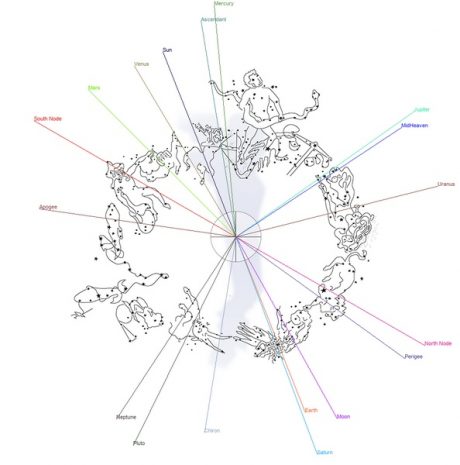
The mythological imagery is, of course, not strictly astronomical. It belongs to the genre of sidereal mythology. The manner of depicting the mythic imagery of the real-sky zodiac is not definitive as the various figures can be envisioned in different ways. Celestics draws on the field of world-wide, cross-cultural comparative mythology to develop the mythological material of the constellations, called the Inventory. The endowment of each individual comprises the same 16 factors, which are also strictly astronomical: a star (the sun), the home planet (earth), the satellite of the home planet (moon), the lunar nodes, the lunar apsides, the inner planets Venus and Mercury, the outer planets, mars, Jupiter, and Saturn, the outermost planets, Uranus, Neptune, and Pluto, and the anomalous cometoid or planetoid, Chiron. (Ascendent and Midheaven are included but that involves other technical issues.)
The custom software for Celestics, StarBase, generates a graphic display of the endowment (seen above) by projecting these 16 factors into the real-sky environment. Note that the manifold includes the earth. This display is called the manifold because it does not merely include planets, but also a star, a lunar satellite, and four features of astrophysical structure, the nodes and apsides of the moon — hence, a manifold of factors. To my knowledge, other astrological formats do not include the lunar apsides.
Celestics is a discipline that involves decryption. The celestician reads the register of the manifold — Venus in a constellation, Uranus in another, apogee here, perigee there, etc — as encrypted lines of genomic inheritance. For instance, Jupiter in the constellation of Virgo (renamed the Virgin in Celestics, to distinguish it from the astrological sign) is a packet of encrypted information, called a lode. The manifold shows Jupiter at the knees of the Virgin. This detail is astronomically exact — no astronomer would argue with that — but also mythographically exact. The task of the Celestician is to decrypt or decode what this detail signifies regarding the innate talent, intellectual potential, creative drive, artistic or visionary gift, or moral imperative inherited orthogenetically by the individual born on the day indicated. This inheritance comes generically from the species genome, but selectively from other individuals in the past with proven records of exceptional achievement, transcendent outlook, and works of genius. These individuals are called exemplars.
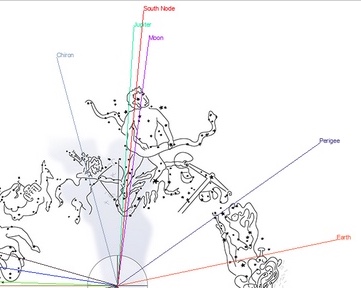
The encrypted information in this section of the manifold of Vincent Van Gogh, reading counterclockwise: Earth in the Virgin, at the grail cup – lunar perigee at the knees of the Virgin – Moon, south lunar node, and Jupiter in the Snaketamer (Ophiuchus) close to the galactic center – Chiron in the Archer at Nunki, the star marking the vane of the arrow and drawing hand.
Note how these features of the encoded data are astronomically precise, but, as well, they are figuratively precise according to the rendering of the graphics of the great constellational images (zodiac: circle or cycle of animations, not animals). The match details in the figures associated imaginatively with the observable star patterns. Note also the name changes in use to distinguish astrological signs from constellations.
There are thirteen well-established constellations on the ecliptic rim but Celestics adds three marginal zones, inlucding the conspicuous the empty space between Archer (not Sagittarius) and Goatfish (not Capricorn). So there are in all 16 lodiacal locales on the Rimsite. There are also 16 factors in the manifold, as explained. Any one of the 16 factors can appear inany one of the 16 locales. This means that all in all there are 16 X 16 = 256 discrete encrypted lines in the totality of the source code of Celestics.
AUDIO [to be published]
The Rule of Psyche
The beauty of the myth you love matches
and generates the power to live it.
Related material:
- futureprimitive interviews on Quest for the Zodiac
- Course 11 Skywatching, lessons in naked-eye observation
- Dendera Decoded, unpublished MS, excerpts to be released
- Eloquent Enigma, audio, text and illustrations on the Dendera Zodiac: Block 102 in Course 11 Skywatching
Course Curriculum
| § HIGHLIGHTS AND PREVIEWS | |||
| 14 Celestics: What’s In It For You | 1012 years, 10 months | ||
| 14 CTC ORIGINAL COURSE | |||
| Private: CTC Original 1 The Truth on Which You Stand | 00:00:00 | ||
| Private: CTC Original 2 : Identity Versus Character | 00:00:00 | ||
| Private: CTC Original : Lesson 2 Addendum | 00:00:00 | ||
| Private: CTC Original 3 : Quandaries of Adaptation and Self-Ordering | 00:00:00 | ||
| Private: CTC Original 4 : The Vectors of Genius | 00:00:00 | ||
| Private: CTC Original 5 : The Rule of Psyche | 1012 years, 10 months | ||
| Private: CTC Original 6 : Mythopoesis and Individuation | 00:00:00 | ||
| Private: CTC Original 7 : Mercury and Venus | 00:00:00 | ||
| Private: CTC Original 8 : Struggle Against the Social Order | 00:00:00 | ||
| Private: CTC Original 9 : The Ascendent and the Riddle of Addiction | 00:00:00 | ||
| Private: CTC Original 10 : The Social and Cultural Currency of StarBase | 00:00:00 | ||
| 14.100 ASB: ASTROLOGY FOR STARBASE | |||
| Private: 14.100 From Horoscope to Terrascope | 00:00:00 | ||
| 14.100 Terrascope and Manifold | 1012 years, 10 months | ||
| Private: 14.100 Maieutic Astrology : The Socratic Method | 00:00:00 | ||
| Private: 14.100 Three Innovations of ASB | 00:00:00 | ||
| Private: 14.100 Expanding the Hierarchy of Needs | 00:00:00 | ||
| 14.101 A PRIMER OF STAR BASE | |||
| 14.101 In the Dark of the Night | 1012 years, 10 months | ||
| 14.101 Astrology Without Stars | 1012 years, 10 months | ||
| 14.101 Visions on the Rimsite | 1012 years, 10 months | ||
| 14.101 Cycles of Animations | 1012 years, 10 months | ||
| 14.102 THE FIVE GREAT TABLEAUX | |||
| 14.100 The Five Great Celestial Tableaux (Stories in the Sky) | 1012 years, 10 months | ||
| Private: 14.100 ONE The Bodhisattva Tableau | 00:00:00 | ||
| Private: 14.100 TWO The Correction Tableau | 00:00:00 | ||
| Private: 14.100 THREE The Andromeda Tableau | 00:00:00 | ||
| Private: 14.100 FOUR The Navigator Tableau | 00:00:00 | ||
| Private: 14.100 FIVE The Braveheart Tableau | 00:00:00 | ||
| 14.103 ORIGINAL RELEASE (2015 - 5) | |||
| 14.102 Forensic Astronomy 1 – 4 | 1012 years, 10 months | ||
| 14.102 Forensic Astronomy 5 – 8 | 1012 years, 10 months | ||
| 14.102 Forensic Astronomy 9 – 12 | 1012 years, 10 months | ||
| 14.103 CELESTICS TRAINING COURSE | |||
| Protected: 14.100 Celestics Training Orientation | 00:00:00 | ||
| Protected: 14.100 Celestics Training: Materia Mythica 1 | 00:00:00 | ||
| Protected: 14.100 Celestics Training: Materia Mythica 2 | 00:00:00 | ||
| 14.100 Celestics Star Base Certification Course: Intro | 1012 years, 10 months | ||
| Protected: 14.100 Celestics II | 01:30:00 | ||
| Private: 14.101 The Art of Forensic Astronomy 1 | 01:30:00 | ||
| Private: 14.100 Celestics | 01:30:00 | ||

